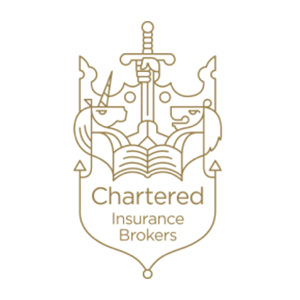Often thought of as straightforward, Business Interruption insurance is an area of cover that can be essential in ensuring the survival of a business but is also an area where we see the most mistakes made by clients. Where such mistakes are made, the consequences can be significant especially in respect of underinsurance or insufficient indemnity periods.
Business Interruption insurance is a coverage that can sit alongside your property damage insurance to provide you with protection for loss of revenue or profit in the event that your business is interrupted by an insured material damage loss. Coverage also usually includes reasonable increased cost of working incurred as a result of the same incident where such costs help reduce a loss of revenue or profit (pay £1 to save £1). In addition, it is possible to include additional increased cost of working over and above the usual provision even where such costs are higher than the loss of revenue or profit (spending more than would be saved) avoided where specific circumstances require it.
Revenue, profit or increased costs only?
This is one of the major decisions to be taken when arranging business interruption insurance and is driven by a number of key factors about your business. Generally speaking, Loss of Revenue cover is most appropriate for businesses with lots of fixed costs and fewer variable ones. This is because the revenue needs to be maintained to continue to meet those fixed costs regardless of whether the business is operational.
Loss of Profit cover is generally more appropriate for businesses with greater variable expenses, such as raw materials or transportation costs, that would fall in line with business activity meaning they need not be insured for.
Where a business has little or no dependency on its premises it may consider Increased Cost Only cover which does not replace lost revenue or profit but merely provides a fund for covering increased costs following an insured incident. Such costs must be reasonable and propotionate and accepted by insurers.
Your team at Griffiths & Armour will discuss the most appropriate basis of business interruption coverage for your business with you so that you can make an informed decision.
Adjustable or non-adjustable?
Regardless of whether you insure for Loss of Revenue or Loss of Profit, there is another decision to be made regarding whether to have an adjustable policy or not. These options are sometimes referred to as Declaration Linked or Sum Insured based. Both options have advantages and disadvantages and the suitability of each will depend on your individual circumstances which you should discuss with your usual contact at Griffiths & Armour. The headlines are as follows:
Non-Adjustable/Sum Insured Basis:
- Fixed premium at commencement of policy, provides certainty
- Minimal administration
- Essential that the insured value is a true representation of Revenue/Profit for the insured indemnity period as a shortfall (underinsurance) will lead to a reduction of any claim as insurer will apply what is known as ‘average’, which would reduce any loss by the proportion that the sum insured is short of the actual Revenue/Profit for the period
- Essential the insured amount is annually reviewed
Adjustable/Declaration Linked Basis:
- The estimate of Revenue/Profit provided at policy commencement is adjusted after the completion of the period with additional (or return) premium payable depending on the
- Greatly reduces the risk of underinsurance as fluctuations other than in extreme circumstances are catered for in the adjustment.
- The variable premium leads to more uncertainty and administration.
- Highly important that the insured amount is annually reviewed
Maximum indemnity period
The indemnity period under your business interruption cover is the longest period that the policy will respond for in the event of an insured interruption. This is an important factor in establishing your insured amount as it must be reflective of the entire duration of the selected indemnity period.
We cannot select an indemnity period for you but your Griffiths & Armour Team would welcome the opportunity to discuss this with you to provide guidance. When considering this, you should take into account all potential activities of your business and at least the following:
- Time to rebuild or repair the premises including site clearance, planning issues and construction delays
- Time where you may not be able to access your site due to action by the authorities
- Time to replace or repair machinery, especially if they are manufactured overseas
- Delay in replacing stock
- Delay in replacing customers
Ultimately the length of time selected should reflect the period it will take to be trading at the level you would have been had the loss not occurred at all. In our experience, clients always underestimate the recovery period and the complications that arise, with 12 months very rarely being sufficient.
Setting your insured value
Whether you are insuring on a Revenue or Profit basis, the importance of the accuracy of your insured value cannot be overstated. Accuracy not only reduces the risk of under insurance on a non-adjustable basis but minimises the likelihood and size of premium adjustments on an adjustable basis.
We cannot calculate your insured value for you but will offer assistance in the calculation process if requested.
You should pay careful attention to the definition of Revenue and Profit in your policy wording to ensure that you calculate this in the correct manner. It should be noted that ‘Profit’ generally has a different meaning in insurance than the usual accounting defintion. We are happy to assist you with this process on request.
Furthermore you must ensure that the period for which you calculate the value is consistent with your maximum indemnity period. Should this for example be set at 36 months, your insured amount would need to be the Revenue or Profit (as defined in your policy) for the 36 months immediately following your policy period (including expected growth over that period) to cater for a loss occurring on the final day of your policy.
Business interruption extensions
There are a number of areas where your business interruption coverage can be extended to cater for losses arising from property damage not at your premises or even from events that would not be considered property damage at all. Examples of such are:
- Damage at specified and/or unspecified customers/supplier’s premises.
- Failure of Public Utilities to your premises.
- Denial of Access to your premises.
- Infectious Diseases at or near your premises.
- Murder or Suicide at or near your premises.
- Damage at offsite storage locations.
- Loss of attraction.
We would welcome the opportunity to discuss these coverages with you to establish those that would be suitable for your business.
Additional increase in cost of working
As mentioned earlier, loss of revenue or profit coverage include cover for reasonable increased costs where such costs help reduce the loss of revenue or profit and are no greater than that reduction. Your specific circumstances may necessitate that you need to spend more than would be saved for specific commercial reasons that must be accepted by your insurer.
It is also possible to make this item operative for a maximum indemnity period longer than that for the Loss of Revenue or Profit item to provide against the possibility, for example, of:
i) alternative premises being taken after the Incident and then occupied permanently at considerable higher rent and rates than was payable at those destroyed and such heavy extra cost continuing subsequent to restoration of normal working, without any corresponding increase over the pre-Incident revenue to carry it, after the end of the maximum indemnity period.
ii) the enforced renting of office premises for a period in excess of the maximum indemnity period due to market conditions
Being a Contingency cover, the sum insured is of necessity an speculative amount that you must decide given your particular circumstances.
Conclusion
Business Interruption can form an important pillar of your business continuity planning and careful thought and consideration needs to be given to choosing how and what you insure.
We welcome the opportunity to discuss this with you and help you to review your business interruption insurance to ensure the most appropriate arrangements are in place. For further information and support, please get in touch.










